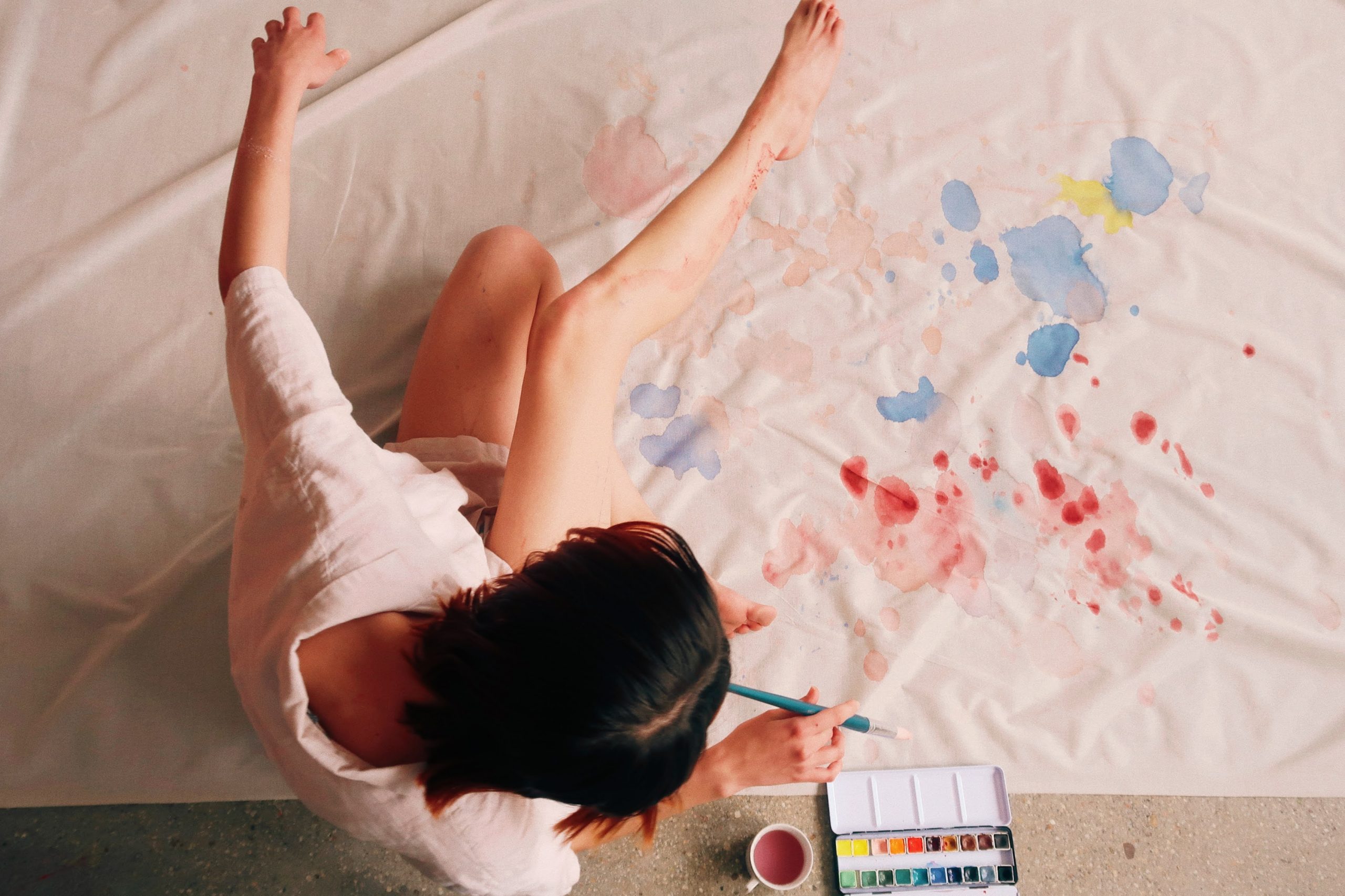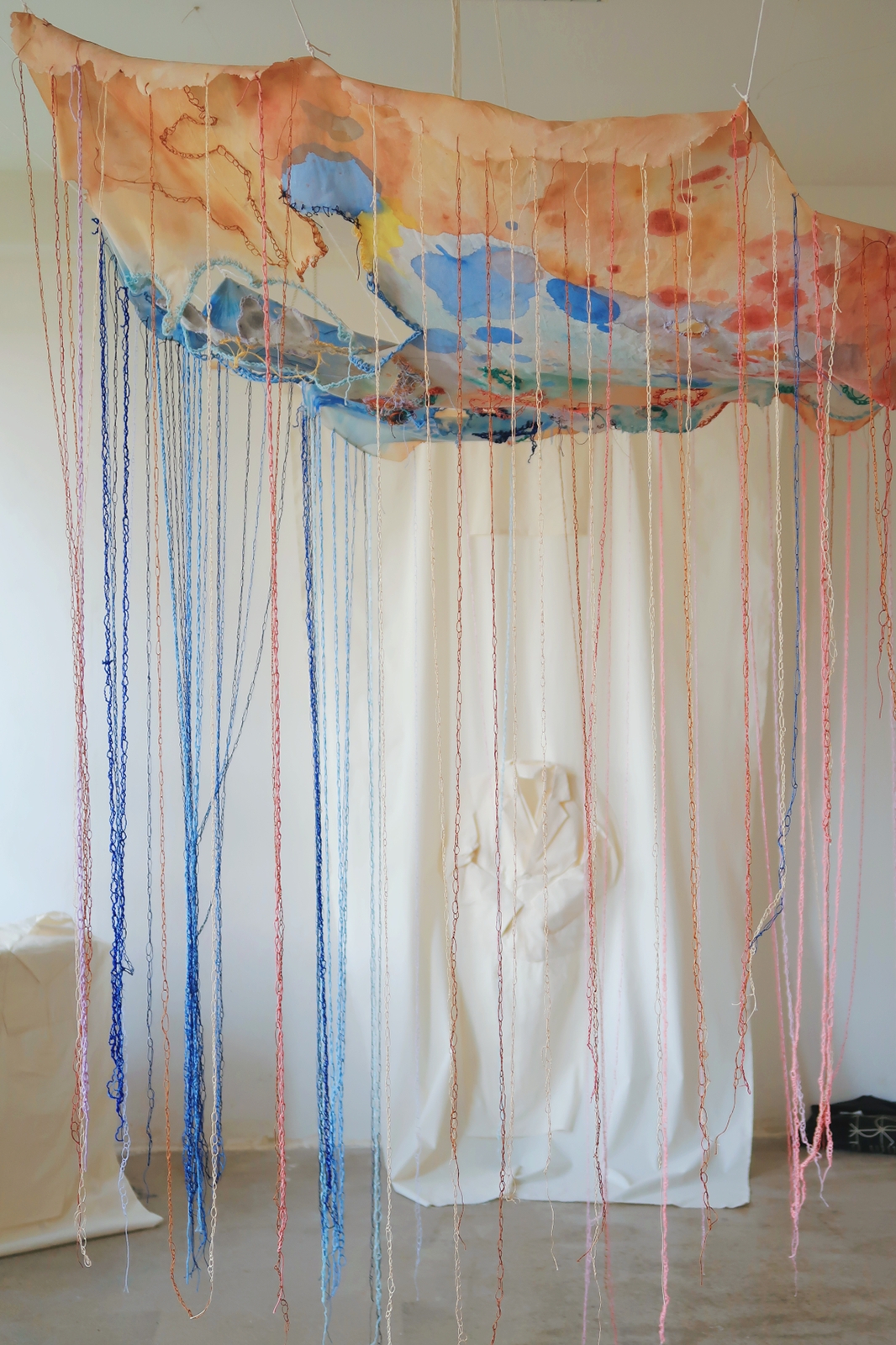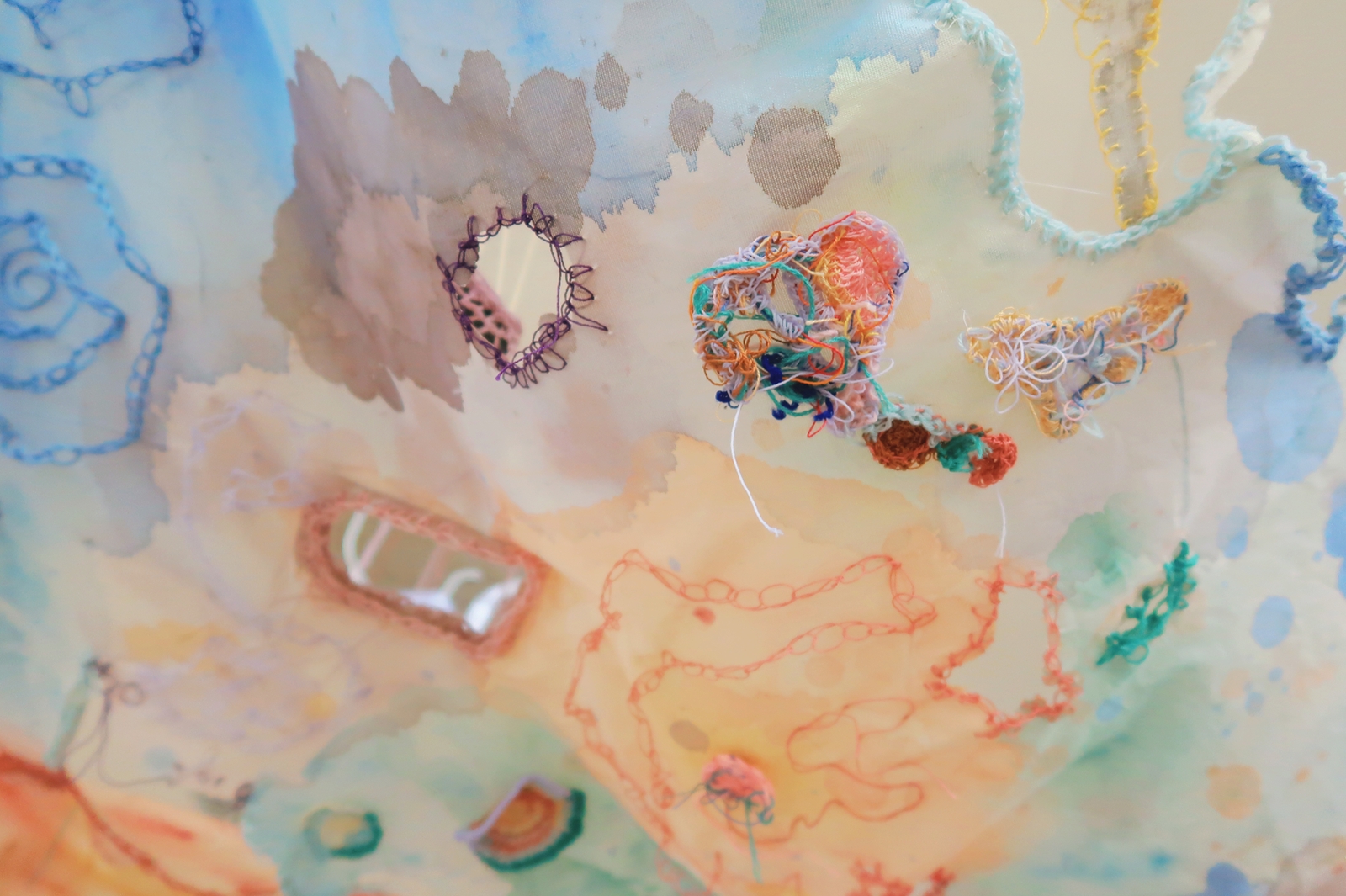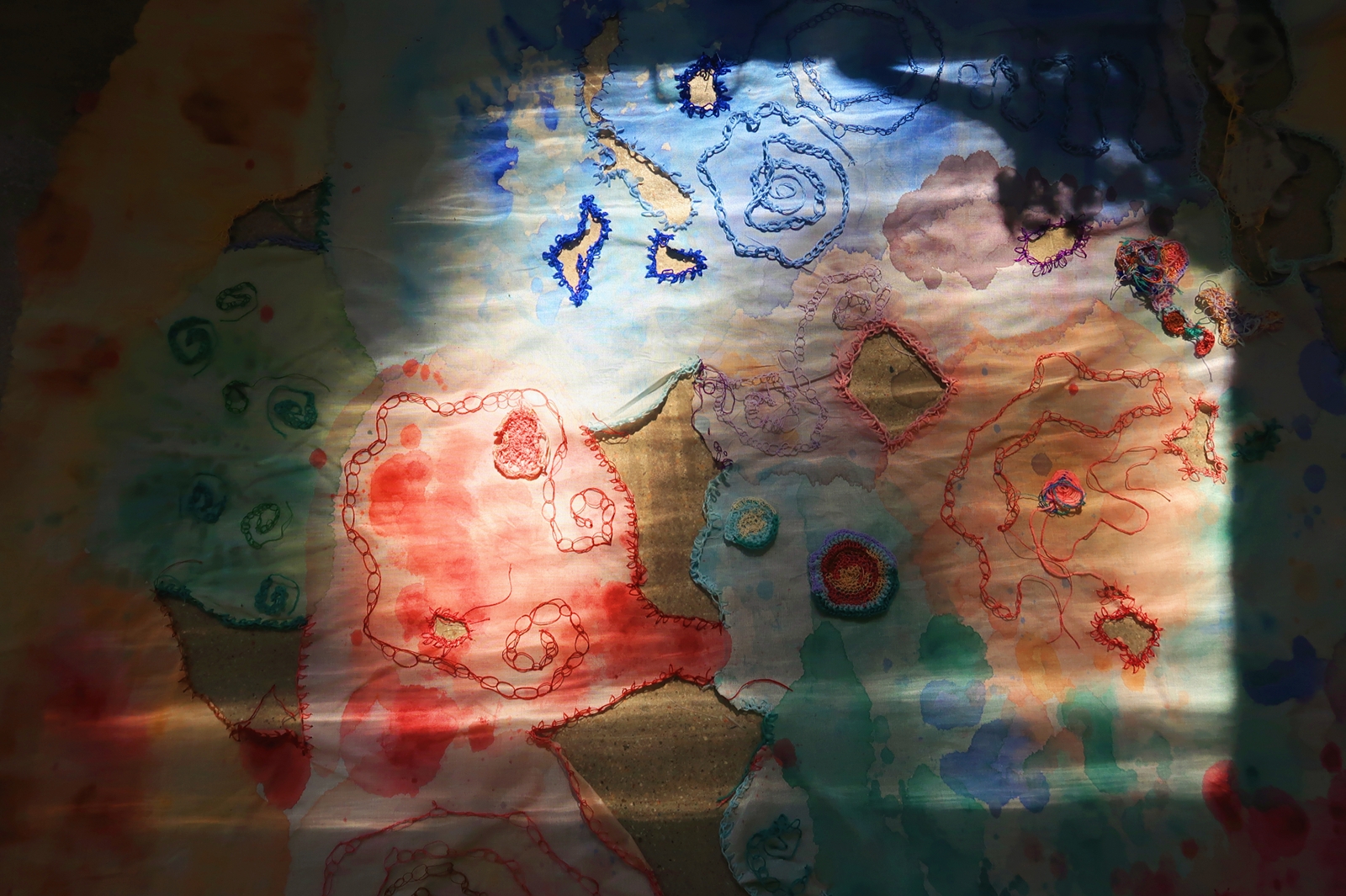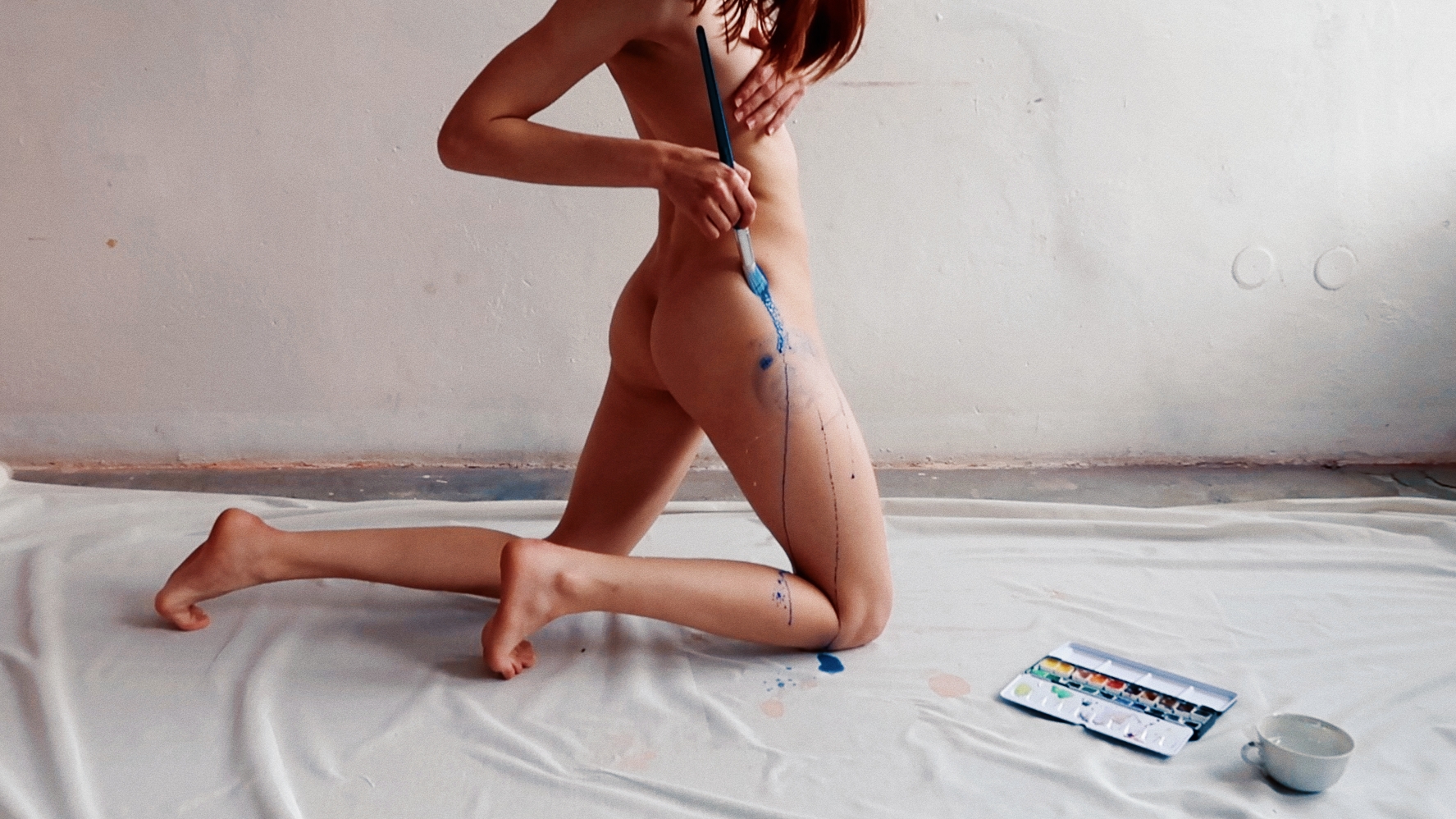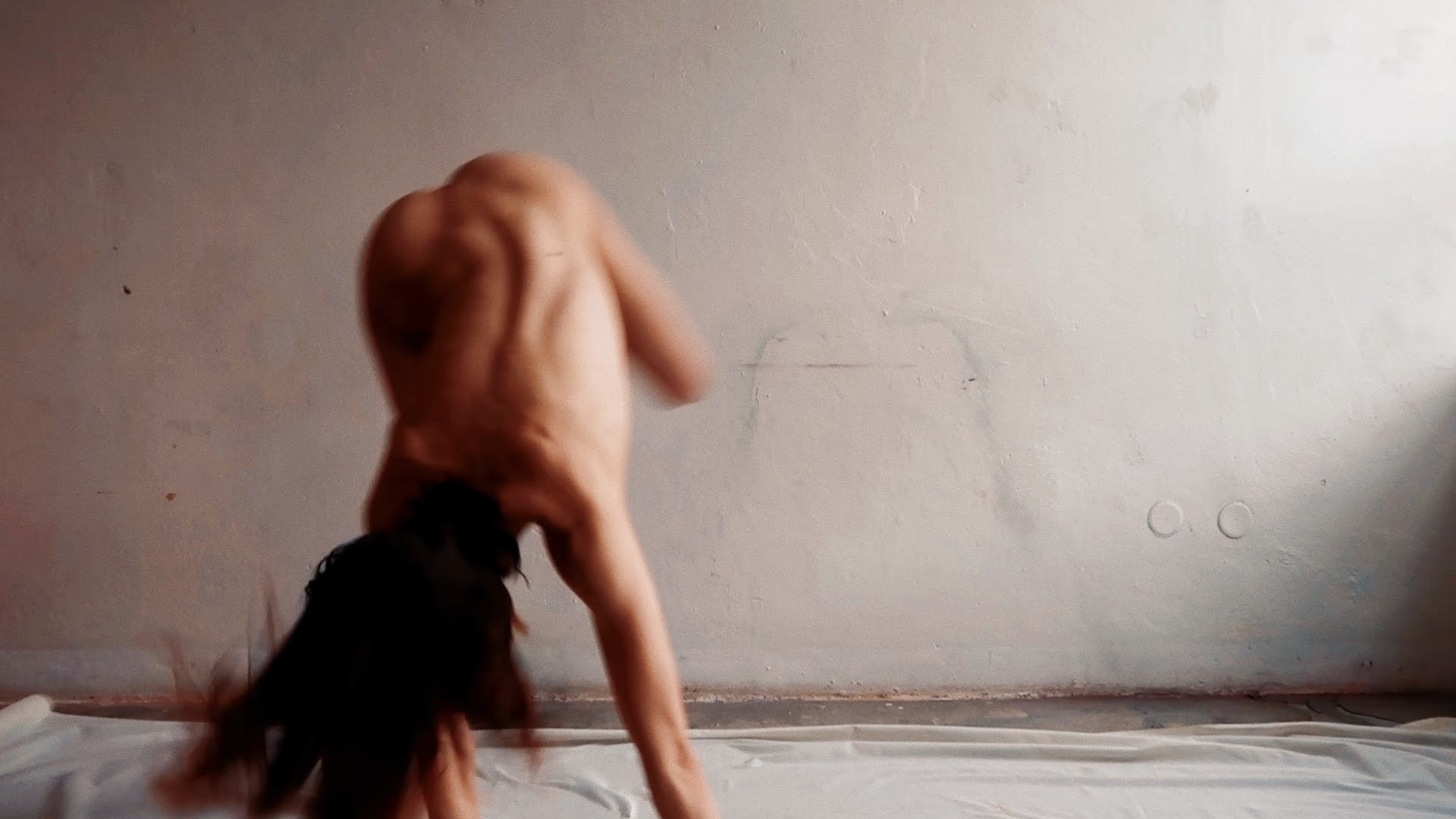Adéla Kočičková
Sebe Vědoma
arte-therapeutic self-portrait
I was led to the creation of this work by an interview in which I arrived at a completely different view of the concept of self-confidence/self-awareness through an aha-moment and therefore decided to explore and experience my (not only artistic) identity through an experimental self-portrait. I worked mainly intuitively and through psychic automatism (visualization and chance) I transferred my body to the canvas using colors belonging to each body part. Colors play an important role, thanks to which I was later able to subconsciously identify pain and diseases of some parts of the body and consciously experience them. In this way, I also discovered a therapeutic character of the work. In response, I began to intervene in the canvas and its (un)natural shape in a more brutal way and then soften and care for these parts. Thus, the work contains not only self-knowledge, respect and acceptance, but also the idea of a constant and disordered increase of colors on our bodies and in life; the formation of holes, the edges of which we more or less successfully try to sew up. It is not only about trying to get to know myself and be aware of myself – but also about the possibility of other participants to find themselves through me, because I believe that we are all infinite and interconnected.
